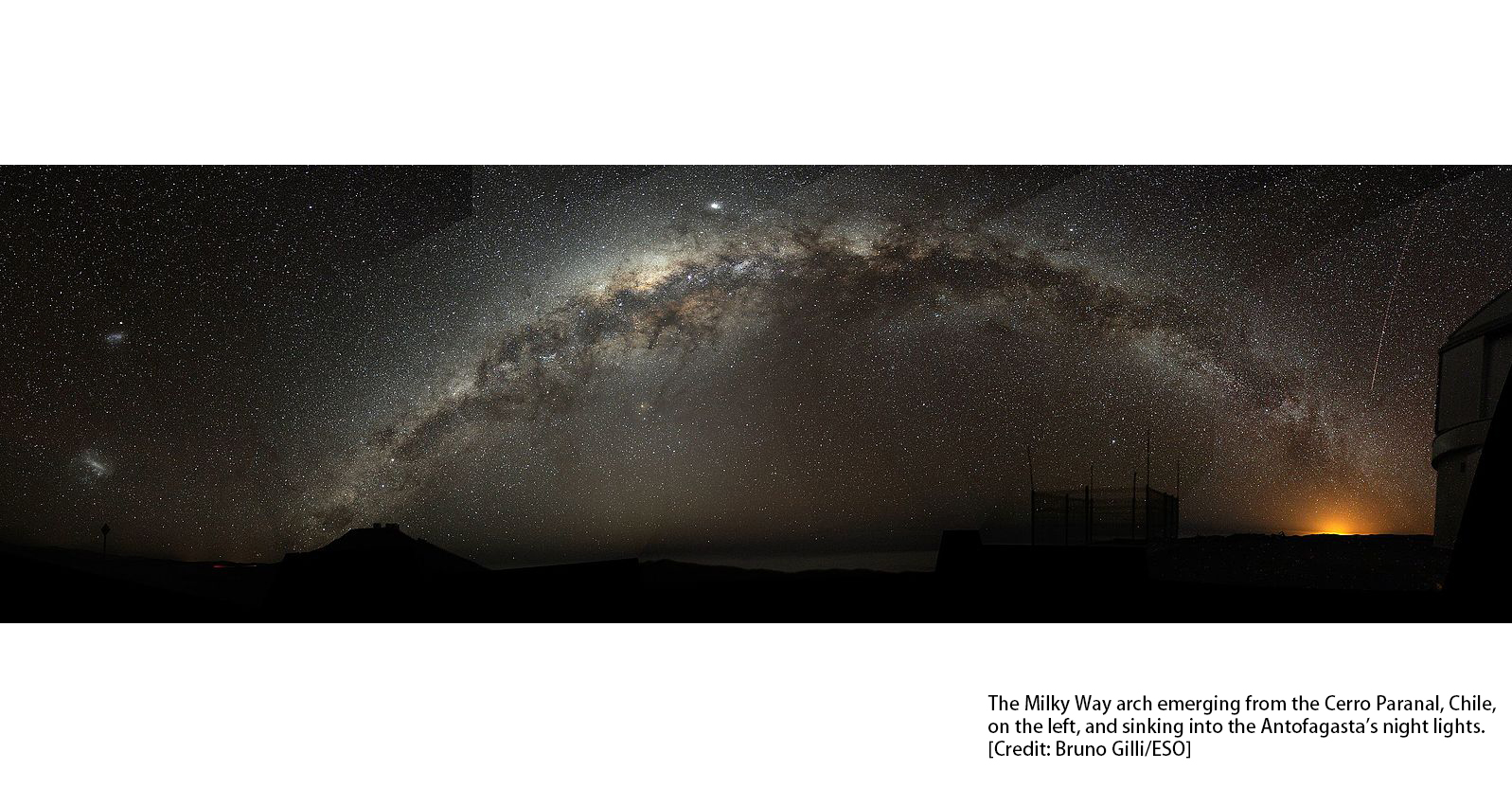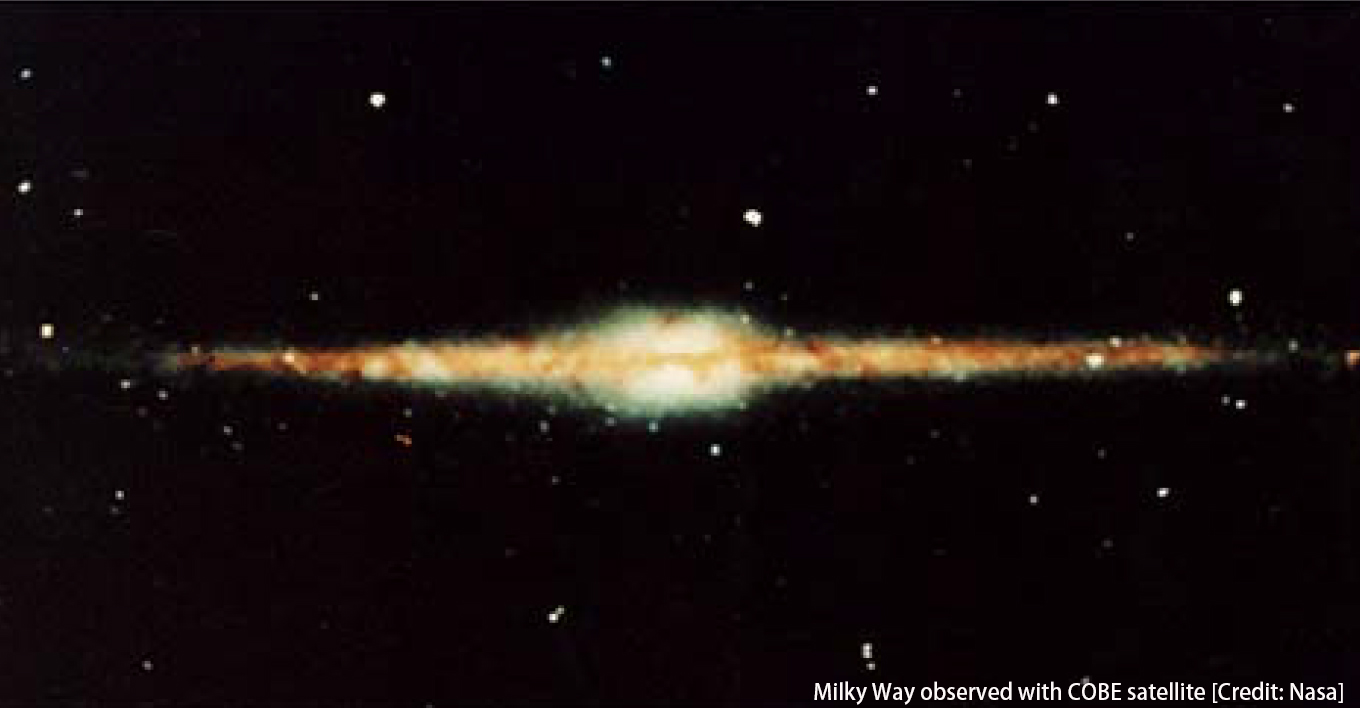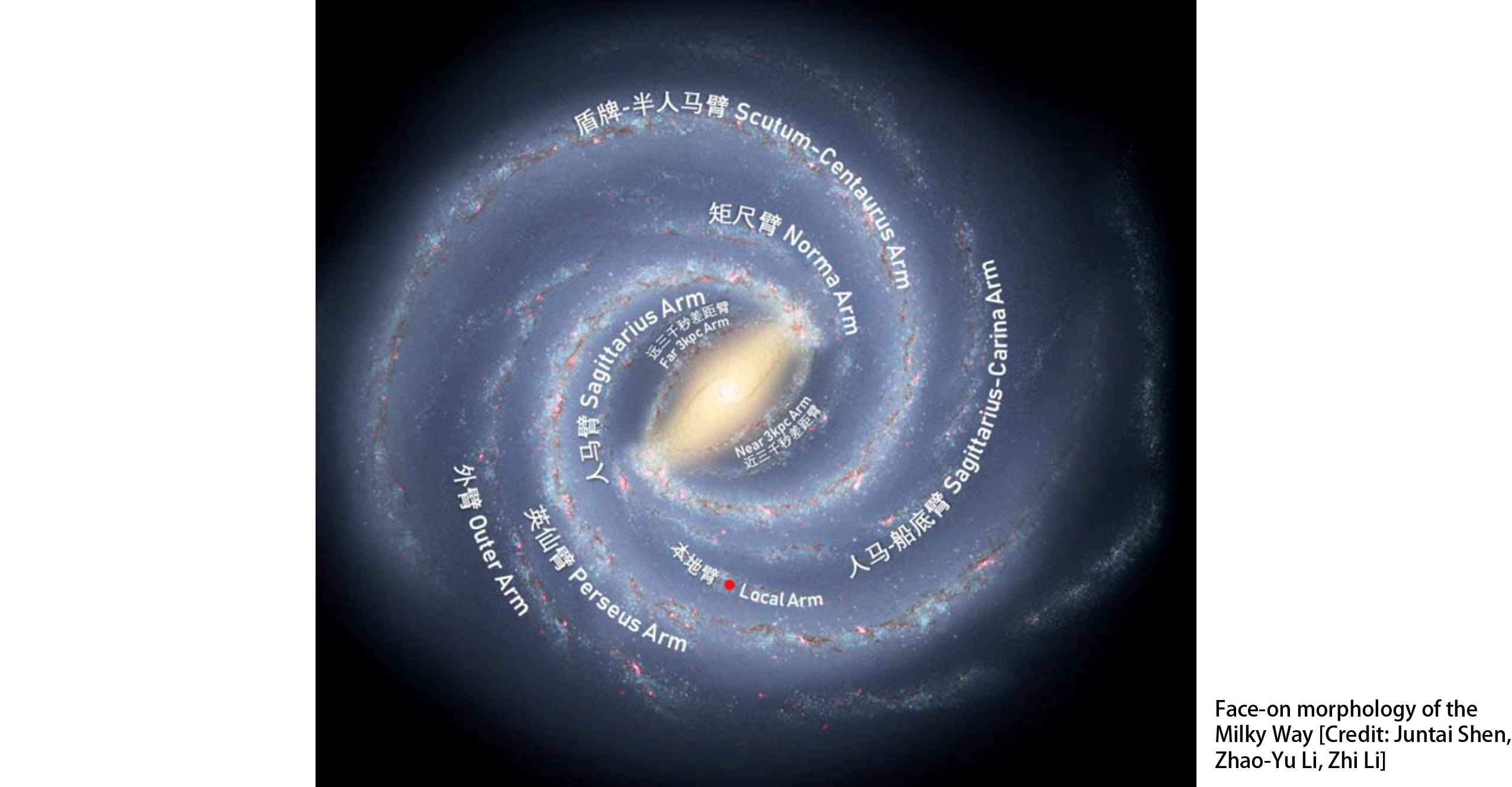Galactic dynamics is the study of the motions of the stars, gas and dark matter in order to explain the main morphological and kinematical features of galaxies. It is the theoretical foundation of the current galaxy formation and evolution studies. Galaxies can be classified into elliptical galaxies, spirals and barred spirals. The shapes of galaxies are governed mainly by the gravitational interactions between the individual mass components, i.e., the stars, dark matter, and gas. The stars form the luminous part of a galaxy. The dark matter contains more mass than the stars and gas, which extends to larger distances (one order of magnitude larger than the baryonic matter). The motions of the stars and dark matter elements are governed purely by their gravitational forces.
The Milky Way is the galaxy that contains our Solar system. The name describes the galaxy’s appearance from Earth: a hazy band of light seen in the night sky formed from stars that cannot be individually distinguished by the naked eye. It appears as a band because its disk-shaped structure is viewed from within.
The Milky Way is a barred spiral galaxy with a diameter between 150,000 and 200,000 light-years. It is estimated to contain 100-400 billion stars. The Solar system is located at a radius of 26,490 light-years from the Galactic Center, on the inner edge of the Orion Arm. The stars in the innermost 10,000 light-years form the bulge with a prominent bar embedded inside. The galactic center is an intense radio source known as Sagittarius A*, assumed to be a supermassive black hole of 4 million solar mass.
With the ongoing and upcoming large scale space and ground-based Milky Way surveys, such as Gaia, LAMOST, and APOGEE, the Milky Way structure formation and evolution study has become the frontier of modern astronomy. This is also one of the main research field in the Department of Astronomy in SJTU led by Prof. Juntai Shen. Our research mainly focuses on the Milky Way bulge structure and kinematics, disk structure formation and evolution, using the numerical simulation and large scale data observed from Gaia, LAMOST, and APOGEE, etc.






